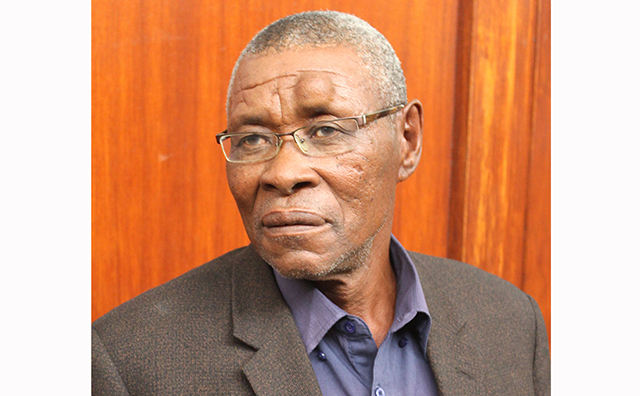THE hearing of a potentially groundbreaking case by eight members of the Hai//om San community wanting legal recognition of their people’s ancestral land rights over Etosha National Park and the Mangetti area has started before a three-judge bench of the Windhoek High Court.
After two postponements – the first in November last year, and then again in May this year – High Court deputy judge president Hosea Angula and judges Nate Ndauendapo and Thomas Masuku yesterday started hearing oral arguments on an application by eight members of the Hai//om community who are asking to be allowed to pursue a lawsuit as representatives of their community against the Namibian government and other parties with interests in Etosha National Park and the Mangetti West area north of Tsumeb.
Jan Tsumib, who is the first applicant in the case, and seven fellow applicants are asking the court to permit them to represent the Hai//om people and individuals who are part of the Hai//om community in future legal proceedings through which they plan to have their ancestral rights over Etosha National Park and the Mangetti West area recognised.
If they manage to cross that first hurdle in their way, they plan to ask the High Court to declare that the Hai//om are entitled to the ownership of Etosha, comprising an area of 23 150 square kilometres, and of an area of 107 000 hectares at Mangetti West, or that they should be compensated for the loss of their ancestral land by being allocated other land, or being given N$3,9 billion in financial compensation.
They also plan to ask the court to declare that the Hai//om community has rights to the natural resources of Etosha, should be financially compensated for their loss of access to Etosha, should be paid royalties in respect of the future use of the national park, and is entitled to have access to Etosha.
They further want to ask the court to declare that Namibia’s government and Namibia Wildlife Resorts, which operates tourism facilities in Etosha, have breached their legal obligations to redress the alleged racially discriminatory dispossession of the Hai//om people’s ancestral lands, the eviction of the Hai//om community from their ancestral land and in particular from Etosha National Park, and the marginalisation of the Hai//om and continuing alleged discrimination against them.
They also plan to ask the court in future proceedings to order the government to allocate an area of 23 000 square kilometres, or of a size determined by the court, in lieu of their ancestral land to the Hai//om.
The government and the Hai//om Traditional Authority are opposing the current application on which the three judges began to hear arguments yesterday.
Senior counsel Andrew Corbett, who is part of the team of lawyers representing Tsumib and the other applicants, started off his address to the court by pointing out that the judges were being asked to consider novel issues in terms of ancestral land rights under Namibian law.
A central premise of the applicants’ case was that they were members of a marginalised and impoverished community that did not have easy access to justice, and that the doors to justice would be closed to them if the court did not find a way in which they could assert the rights of their community, Corbett said.
While Tsumib and his co-applicants were seeking to assert their community’s rights in respect of their ancestral land in Etosha and the Mangetti area, they have assured the court in affidavits that they also support conservation and tourism activities in Etosha National Park, Corbett pointed out.
He reminded the court that most of the last Hai//om people who were living in Etosha were evicted from the park in 1954, leading to a total loss of their access to that area where their people had traditionally resided in the past.
Corbett also remarked that Etosha is an enormous national asset from which Namibia’s government and pre-independence colonial governments have benefited – and that the only people who have not benefited from it were those who were dispossessed when they were evicted from the park.
With class action lawsuits not at this stage a possible option in terms of Namibian law, the country’s law needed to be developed to allow Tsumib and the other applicants to pursue the legal action they are planning to take in a representative capacity on behalf of their community, Corbett argued.
The Hai//om community is made up of about 6 200 people, according to an anthropologist who has studied the community.
Almost half of the community – 2 476 people – have registered their support for the legal action being taken by Tsumib and his co-applicants, Corbett informed the court. The hearing is due to continue today, and could take to the end of this week.
Stay informed with The Namibian – your source for credible journalism. Get in-depth reporting and opinions for
only N$85 a month. Invest in journalism, invest in democracy –
Subscribe Now!






